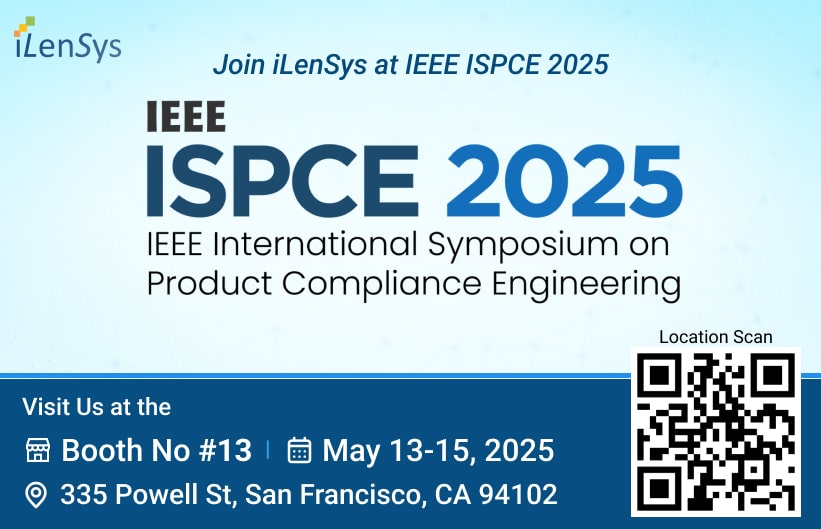Chromium (Cr) – the 21st most abundant element in the Earth's crust – is a chemical found naturally in the environment including in soil, rocks, plants, and volcanic dust. The grey lustrous metal, primarily obtained from the mineral chromite, has a high melting point. It can exist in many different oxidation states, of which Trivalent Chromium or Chromium (III) and Hexavalent chromium or chromium (VI) are the most common.
Trivalent Chromium or Chromium (III) is relatively non-toxic and proposed to be essential for human nutrition in trace amounts.
Hexavalent chromium, or chromium (VI) is a highly toxic and carcinogenic compound, mainly produced industrially. A contaminant of emerging concern (CEC), chromium (VI) has infiltrated the environment through man-made activities.
Hexavalent chromium compounds are commonly used in:
Electroplating: Used as a shiny protective and anti-corrosive coat on metals and other surface coatings.
Pigments: Used as pigments in dyes, inks, and plastics for durability. The compounds can be used to produce colorful pigments and impart different colors to paints.
Wood Preservation: Used in chemical treatments, for instance, chromated copper arsenate (CCA) treatment that protects wood from decay and pests.
Leather Tanning: Trivalent chromium compounds are commonly used in the leather tanning process to help stabilize the leather structure and prevent degradation. However, during the manufacturing process or through exposure to certain environmental conditions, trivalent chromium can oxidize into hexavalent chromium.
Aerospace and Automotive Industries: Sealants containing soluble hexavalent chromium compounds are used in aerospace and defense manufacturing to prevent base metal from corrosion.
Who is at Risk of Hexavalent Chromium Exposure?
People can come into contact with hexavalent chromium primarily through their occupation, consumer products, or contaminated environment.
Workplace Exposure: The direct route of exposure is occupational settings, including industries involved with stainless steel production, electroplating, and leather tanning. Many people working in industries where Hex-chromium is being used as an anti-corrosion agent are at a high exposure risk without using protective equipment.
At-risk Products: Certain consumer products such as leather goods, paints, inks, dyes, or even textiles where chromium (VI) is being used. End users can come in contact with contaminated products where chromium (VI) is not properly stabilized.
Environmental Contamination: Chromium (VI) can be present in soil and water near industrial sites, waste disposal, and treatment areas. Chemically contaminated water can leach into the soil and water, contaminating groundwater and surface water.
Modes of Contact: The main ways in which individuals can come in direct contact with chromium (VI) are through inhalation, skin contact, and ingestion.
Effects of Hexa-Chromium Exposure on Human Health
Hexavalent chromium, or chromium (VI) is a toxic form of the element Chromium. The hexavalent chromium compounds are potent carcinogens, exposing individuals to serious health hazards. Researchers have identified the following health anomalies in individuals exposed to this chemical based on the amount and duration of exposure to the compound.
Skin and Eyes: Skin contact with the compound can lead to dermatitis in the form of rashes, ulcers, and skin irritation. Severe cases may result in long-term skin sensitivity. Direct eye contact with chromate dust or chromic acid can cause damage to the eyes permanently.
Carcinogenicity: Classified as a Group 1 carcinogen by the International Agency for Research on Cancer (IARC), Hex chromium poses a significant risk of developing lung cancer. Researchers have found sufficient evidence of the relationship between Chromium (VI) and cancer. Moreover, research by Welling et al. suggests Chromium (VI) may be linked to stomach cancer.
Stomach and Kidney Disorders: Drinking contaminated water can cause stomach ulcers, pain, and vomiting. Moreover, it can impair the functions of the kidney and liver over time.
Pulmonary Toxicity: Inhalation of chromium compounds can irritate the respiratory tract, leading to symptoms such as coughing, wheezing, and shortness of breath. Prolonged exposure may result in more serious conditions like bronchitis, pulmonary edema, and even lung cancer.
Effective ventilation, protective equipment, and adherence to safety protocols are crucial in mitigating the risks associated with hexavalent chromium exposure in the workplace.
ECHA Receives Expanded Mandate to Address Chromium (VI) Substances: New Deadlines and Calls for Evidence
The European Chemicals Agency (ECHA) has received an updated mandate from the Commission to propose a restriction on chromium (VI) substances. This expands on the original request from September 2023, which focused on specific entries on the REACH Authorisation List. Now, the mandate includes additional chromium (VI) substances listed on the Authorisation List, as well as those not listed, such as barium chromate, which may pose risks if used as substitutes. The submission deadline for the restriction proposal has been extended to April 11, 2025, to accommodate the wider scope. ECHA will launch a second call for evidence in June to gather information on various topics related to chromium (VI) substances. Stakeholders' input from the first call for evidence will be considered, and a webinar is scheduled to discuss outcomes and additional data needed. The proposal's preparation and evaluation will follow the standard REACH restrictions process, considering ECHA's expertise gained from processing authorization applications for these substances.
EPA Regulations and Chromium in Drinking Water: Ensuring Safety and Compliance
In recent years, concerns regarding the presence of chromium in drinking water have gained significant attention. The United States Environmental Protection Agency (EPA) plays a crucial role in regulating the levels of chromium in drinking water to ensure public health and safety. Under the Safe Drinking Water Act (SDWA), the EPA establishes maximum contaminant levels (MCLs) for various substances, including chromium.
The current MCL set by the EPA for total chromium in drinking water is 100 parts per billion (ppb). This limit encompasses both chromium (III) and chromium (VI) and aims to protect consumers from adverse health effects associated with excessive chromium exposure. However, given the distinct toxicity of chromium (VI), there have been discussions about establishing a separate MCL specifically for hexavalent chromium.
In 2008, EPA began a comprehensive review of the potential health implications of chromium 6. The EPA is actively researching chromium contamination, working with state agencies and stakeholders to develop strategies for monitoring and treatment. Managing chromium levels is challenging due to various contamination sources like industrial discharge and mining activities. The EPA stresses proactive measures such as source water protection and public awareness to address this issue. Collaboration and ongoing research are vital for safeguarding drinking water quality and preventing harmful chromium levels.
OSHA guidelines and regulations on chromium (VI)
OSHA's regulations on chromium (VI) establish permissible exposure limits (PELs) for airborne chromium (VI) and require employers to take measures to minimize exposure levels and safeguard workers.
Key provisions of OSHA's regulations on chromium (VI) include:
- Set Permissible Exposure Limits (PELs): OSHA sets specific PELs to restrict workers' exposure to airborne chromium (VI). The current limit is 5 micrograms per cubic meter of air (µg/m3) as an 8-hour time-weighted average (TWA).
- Assess Exposure Levels: Employers are required to routinely evaluate airborne chromium (VI) concentrations in workplaces susceptible to exposure. This assessment helps pinpoint locations with heightened chromium (VI) levels and assesses the efficacy of implemented control measures.
- Implement Engineering and Work Practice Controls: OSHA mandates implementing engineering controls to minimize workers' exposure to chromium (VI). This includes enclosed systems, local exhaust ventilation, and process modifications to reduce airborne chromium (VI) particles.
- Provide Protective Equipment: Employers must provide appropriate respirators, such as respirators with HEPA filters, as well as supply suitable PPE like protective clothing, gloves, and eye protection to prevent inhalation, direct contact with chromium (VI) particles.
- Establish Hazard Communication Programs: Employers must establish comprehensive hazard communication programs to educate workers about chromium (VI) exposure risks, safe practices, and emergency procedures, including container labelling and other forms of warning.
- Medical Surveillance: OSHA requires medical surveillance programs for workers exposed to chromium (VI) above specified levels. These programs involve regular health monitoring, including medical exams and biological monitoring, to detect and address any adverse health effects.
Adhering to OSHA's regulations on chromium (VI) enables employers to protect workers' health and safety in environments with this hazardous substance. Effective implementation of control measures, regular monitoring, and thorough training are crucial elements of workplace safety programs aimed at minimizing risks associated with chromium (VI) exposure.
How iLenSys can Help?
iLenSys offers comprehensive support to help companies maintain compliance with evolving regulations. Our compliance software solution helps manage product lifecycles and stay updated with regulatory requirements.
Subscribe to Updates: Sign up for a newsletter to stay informed about the latest regulatory changes and compliance tips.
References and Further Reading:
Health hazards of hexavalent chromium (Cr (VI)) and its microbial reduction - PMC (nih.gov)
Hexavalent Chromium | NIOSH | CDC
Chromium (7440-47-3) | Chemical Effects in Biological Systems (nih.gov)
Welling R, Beaumont JJ, Petersen SJ, et al Chromium VI and stomach cancer: a meta-analysis of the current epidemiological evidence Occupational and Environmental Medicine 2015;72:151-159.
Please Enter your Business Email to download the WhitePapers
ilensys needs the contact information you provide to us to contact you about our products and services. You may unsubscribe from these communications at any time. For information on how to unsubscribe, as well as our privacy practices and commitment to protecting your privacy, please review our Privacy Policy.
Talk to ours Product Environmental Compliance Experts.
By submitting this form, I agree to receive emails about iLenSys's products and services as per the Terms of Use. I can unsubscribe at any time via the 'unsubscribe' link in iLenSys emails or by emailing contact@ilensys.com. I also agree to the Privacy Policy.
Sign up for the latest Blogs, Case studies, Whitepapers, Webinars and Videos.
- Blogs
- Case Studies
- News and Updates
- Videos
- Webinars
- White Papers
-
- Product Environmental Compliance
- Obsolescence Management
- Regulatory & Product Safety
-
-
-
-
-
-
- New Product Development
- Mechanical Design
- FEA Validation
- Benchmarking and Value Engineering
- 3D Scanning and Reverse Engineering
- 3D Printing
-
- Embedded Systems
-
- Industrial Automation
-
- Quality Assurance and Regulatory Affairs
-
- Extended Reality
- 3D Animation & Video Production
- WebGL Development
- Graphics and UI/UX Reality
-
- Technical Documentation
-
- Early Engineering Talent (EET)
-
-
-
- Lab Equipment
- Medical Devices and Equipment
-
- Scientific Instruments
-
- Life Sciences
-
- Static and Mobile Equipment
-
- Material Handling Equipment
-




